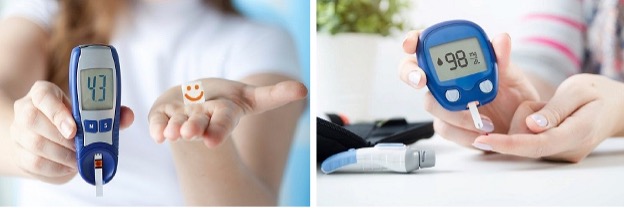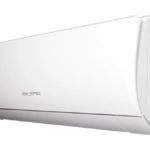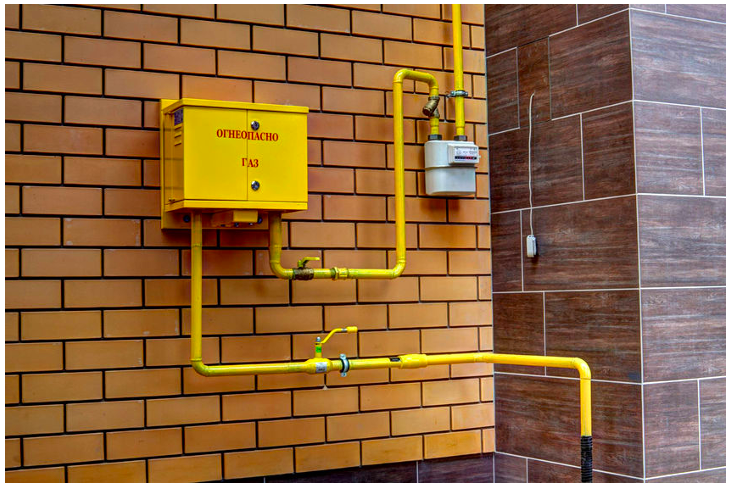How to use a glucometer correctly: setting rules, instructions for use
Why do you need a glucometer? This is a question people often ask themselves when faced with a diagnosis of diabetes or other problems related to regulating blood sugar levels. A glucometer allows you to monitor your blood sugar at home without the need for regular visits to the doctor. It is an essential tool for actively monitoring and managing your health.

The content of the article
Main components and how the meter works
Before jumping into the instructions, it's helpful to understand how the meter works. The device consists of several key components:
- display for displaying results;
- test strip slot;
- control buttons to configure the device.
The meter works based on the biochemical reaction between the reagents on the test strip and the sugar in a drop of blood. The result is shown on the display in the units of measurement accepted in your country (mmol/l or mg/dl).
Instructions for using the glucometer and initial setup
The first step is setting up the meter.This is usually a simple procedure that involves selecting units of measurement, date and time. Follow the instructions provided by the manufacturer to avoid mistakes.

How to take blood sugar for a glucometer
Drawing blood for sugar testing is a critical step that requires precision and adherence to certain medical standards. A careless attitude to the process can lead to distorted results, which, in turn, can negatively affect the effectiveness of treatment.
Before starting the procedure, you must thoroughly wash your hands with soap and treat them with an antiseptic. If using an alcohol solution, wait until it dries completely. Ensure that all instruments used are sterile: lancet, meter, and test strip.
Follow the following sequence of actions for successful blood collection:
- Prepare the lancet and ensure it is sterile.
- Select a puncture site. It is recommended to use the side of the fingertip as the skin is less sensitive here.
- Treat the selected area with an antiseptic.
- Give a quick and decisive thrust with the lancet.
- Wait for a drop of blood to appear and gently apply it to the test strip.
After successful blood collection and analysis, disinfect the injection site and monitor its condition to avoid possible infection.
Accuracy and accuracy when collecting blood are the key to reliable results and successful monitoring of blood sugar at home with a glucometer. By following these guidelines, you will minimize the risk of receiving misleading data and ensure you have reliable information to monitor your health.
Practical recommendations for use
Measuring your blood sugar levels correctly is a key step that requires precision and proper procedures. First of all, make sure that all components: the lancet, the test strip, and the meter itself are sterile. Monitor the expiration date of the test strips and store them in proper conditions.
Next, you need to carefully perform the blood sampling process. Use the lancet as indicated in the instructions, and be sure to treat the puncture site with an antiseptic. This will minimize the risk of introducing error into the measurement result and provide more accurate data.
Process of measuring sugar with a glucometer step by step:
- Wash and disinfect your hands before the procedure.
- Make sure your meter and test strip are ready to use.
- Perform a puncture with a lancet, observing all the rules of asepsis.
- Apply blood to the test strip at the indicated location.
- Insert the strip into the glucometer and wait for the result.
- Record the result for further analysis and monitoring.
After receiving the result, do not forget that each measurement is only a “snapshot” of the current state of your blood sugar level. Regular and systematic measurement of sugar with a glucometer allows you to get an objective picture and, if necessary, adjust treatment in accordance with the dynamics of indicators.
What does the glucometer show?
What does the glucometer show? This is a question that interests many. A glucometer measures your blood sugar level at a given time. It does not provide a comprehensive assessment of your health, but is an important indicator that should be monitored regularly.
Mistakes when using a glucometer
Using a glucometer to monitor your blood sugar levels is an integral part of managing diabetes and other glucose-related conditions. However, incorrect use of this medical instrument can lead to significant distortions in the results.
Among the most common mistakes are incorrect device settings, use of expired or inappropriate test strips, as well as insufficient sterility of instruments and work surfaces. All these factors can significantly affect the glucometer readings and, as a result, the effectiveness of the treatment process.
Common errors and ways to resolve them:
- Before using for the first time, please ensure that the device is configured correctly. Follow the instructions for use of the meter.
- Using expired test strips. Always check the expiration date and store them according to the manufacturer's recommendations.
- Insufficient sterility. Read how to properly sterilize your device.
- You should strictly follow the blood sampling technique described in the section “How to take blood for sugar for a glucometer.”
- Inattentive following of instructions. Even a slight deviation from the recommended procedure can skew the results.
By avoiding these mistakes, you significantly improve the accuracy of monitoring your blood sugar at home with a glucometer and make this process a reliable tool in the hands of both healthcare professionals and patients. Remember that skewed data is not only uninformative, but can also be dangerous because it influences future medical decisions.
Conclusion: how to use the ACCU glucometer and other models
Regardless of what kind of glucose meter you have, be it an ACCU meter or some other model, the key to successfully measuring your blood sugar with a glucose meter is following the instructions and doing it regularly. This way, you can not only control, but also take timely measures to maintain optimal blood sugar levels.





